Day 3 and Beyond--the Boat Diving
Our dive schedule called for three dives a day. We were picked up at the dock for a two tank dive in the morning about 8:15 a.m., brought back about noon and picked up at 3 p.m. for a single tank dive. Our first boat dive is at a location called Plancar Horseshoe. Our boat makes four stops to pick up the 16 divers who make up the two groups that day, each under the supervision of a divemaster. On the way to the divesite, in what becomes a daily ritual, we assemble our gear checking the contents of the tanks with an analyzer to ensure the Nitrox mix we ordered is the mix we get.
The Alaskan contingent dives as a group and the divemaster cautions us not to get too spread out. As with all boat diving on Cozumel, this is a drift dive with a fast current along the wall with a number of swim throughs. After one group enters the water and descends, the boat motors away to deposit the other group. Ideally, the groups remain separated by this distance through the dive. At the end of the dive, which is indicated by 700 psi tank pressure, we ascend to a 15-foot safety stop.
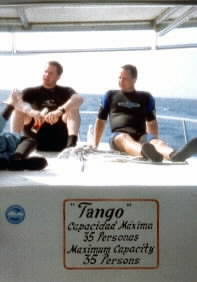 | On surfacing, the boat should pick us up. At least, that's the plan. There are several boats in the area. During the pre-dive briefing we are advised to remember the name of the boat and that it monitors Channel 88 on the marine radio. If a different boat comes by to pick us up, they will radio the boat that we came from. While we were picked up by our boat each time, veteran Cozumel divers love to relate incidents where a group of divers got caught in a current and got picked up by a different boat some distance away. There are also stories about divers being left in the water when their boat leaves the site unaware that not all are on board! |
Using a 2-mm shortie wetsuit in the 81 degree temperature, I have about 9 pounds in each of the two integrated weight pockets on my B.C. The dive has some great scenery. As I begin to ascend at the end of the dive, one of the weight pockets separates from the b.c. and plummets to the sand below, narrowly missing one of the other divers, Justin. He retrieves the pack for me. Apparently, the velcro which holds the pockets is losing its gripping power and I switch to my weight belt for the rest of the dives.
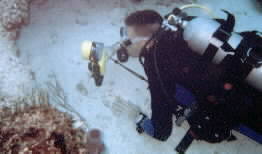 |
The reefs seem relatively healthy, although you can see where portions have been stressed. Also, the sheer number of divers contributes to stress on the habitat. These are not cattle boat operations, but when dozens of small boats use the same reefs, well you begin to get the picture. This was especially true when high winds and seas limited the reefs that were accessible and all the boats seemed to head to the same place. The groups of divers seemed to merge underwater into a big bait ball and the groups did not emerge from the ball intact, much to the consternation of the divemasters.
| |
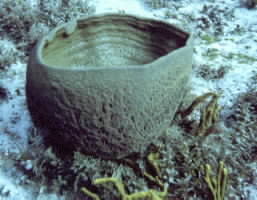 | 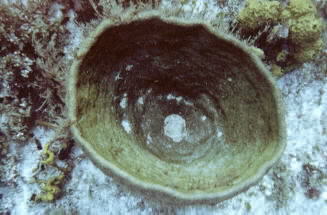 |
 |
| We did have a chance to do a wreck dive, a former Mexican Navy patrol vessel, C-53, engineered in a way that it is not considered a penetration dive. Compartments have been opened to allow divers easy entry and exit. I am paired with a newly-certified diver who related that he did not feel comfortable swimming through the wreck. So he and I swam about the exterior of the wreck as the group wandered around the interior. The combination of the wreck and water makes for framing some great photos. |
The current was really ripping across the wreck stern to bow. My partner ran low on air (700 psi) before the divemaster was out of the wreck. There were two ascent lines to the mooring buoys that the boats tied off to while waiting for their divers. Both were occupied, but I didn’t know which one was ours. We were amidships when Ted signaled it was time to go to the surface. I figured we had a 50-50 chance of coming up on the right boat. I swam Ted to the stern mooring line against the current. If we surfaced on the wrong boat we could drift back to the correct boat. Whereas, if we came up on the boat moored to the bow, we would have had an impossible kick against the current. Also, if we had to let go of the line during the safety stop we would come up down current of the moored boat with no guarantee that it would slip the mooring before it had retrieved all the other divers, which means we would be in for one hell of a drift. As it turned out, we came up on the wrong boat and drifted back to the right boat.
We went diving on a number of reefs and walls through the week. While any number of guide books are available, I found the Cozumel: Dive Guide and Log Book to be very useful, thoroughly readable, and richly illustrated.
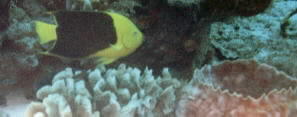
No comments:
Post a Comment